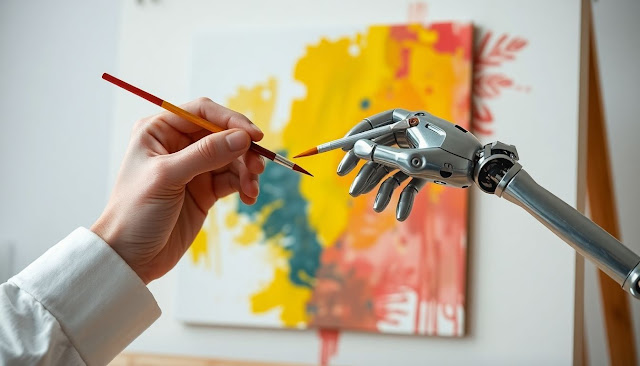The rise of generative AI poses significant challenges to the creative industries, prompting urgent calls for new regulations and protections for artists. A recent report highlights how AI is diminishing job security, compensation, and the perceived value of creative work, necessitating a collaborative effort from governments, industry, and creators to ensure fair practices and sustainable growth.
The AI Revolution and Its Impact on Creativity
Generative AI is transforming creative sectors, offering tools that enhance efficiency and unlock new artistic possibilities. However, this technological advancement also brings concerns about style imitation, copyright infringement, misattribution, and loss of control over creative works. The UK's creative sector, a significant contributor to the economy, faces a critical juncture where responsible AI development must align with robust creator protections.
Key Concerns for Creative Workers
Research indicates a widespread apprehension among creative professionals regarding the impact of generative AI:
- 73% believe generative AI is changing the quality of work.
- 68% feel their job security is diminished.
- 61% report a diminished value of their work by others.
- 55% state that financial compensation for their work is diminished.
Freelance workers are particularly vulnerable to these changes, often lacking the protections afforded by salaried positions.
Proposed Solutions and Policy Recommendations
To safeguard the future of creativity, several key measures are being advocated:
- Fair Remuneration: Enforcing existing ownership rights and creating new mechanisms to redistribute AI-generated revenues back to human creators.
- Legislative Reform: Updating laws to protect the freelance creative workforce, addressing employment rights, skills development, and AI-specific risks.
- Inclusive AI Governance: Embedding creative workforce perspectives in AI regulatory design.
- Stronger Regulation for AI Firms: Mandating transparency, prompt action on infringement, and compensation for unauthorised use of creative outputs.
- Ongoing Impact Assessments: Monitoring the effects of generative AI on job quality, working conditions, and income security.
- Preserving Human Originality: Introducing 'human made' watermarking and provenance tools to distinguish AI-generated content.
- Workforce Training and Empowerment: Providing education on intellectual property, labour rights, contract negotiation, and anti-mimicry strategies.
The Need for a Federal Anti-Impersonation Right
One significant proposal is the establishment of a Federal Anti-Impersonation Right (FAIR Act). This would provide artists with a legal recourse against intentional and commercial impersonation of their work or likeness through AI tools. This right would target the misuser of the AI tool, requiring intent to impersonate for commercial gain, and would include statutory damages to ease the burden of proving economic harm. Such a federal law would prevent a patchwork of conflicting state regulations and ensure consistent protection for creators.
Collaboration for a Fair Future
Industry leaders like Adobe are committed to responsible AI development, training their models on licensed content and advocating for policies that empower creators. They emphasise the importance of transparency, ethical standards, and supportive policies to ensure AI accelerates creativity without compromising artists' rights. Collaboration between policymakers, creators, and industry partners is crucial to navigate the evolving landscape and build a fair and sustainable future for the creative industries.
Sources
- The FAIR Act: A New Right to Protect Artists in the Age of AI, the Adobe Blog.


